
Oct 17, 2014 was an important date for many SEOs, webmasters, and business owners. Penguin, which we’ve been waiting over an entire year for, started to roll out. Google’s Gary Illyes explained at SMX East that Penguin 3.0 was imminent, that it would be a “delight” for webmasters, that it would be a new algorithm, and more. So we all eagerly awaited the arrival of Penguin 3.0.
There were still many questions about the next version of Penguin. For example, why has it taken so long to update Penguin, would there be collateral damage, would it actually have new signals, would it roll out more frequently, and more? So when we saw the first signs of Penguin rolling out, many of us dug in and began to analyze both recoveries and fresh hits. I had just gotten back from SES Denver, where I was presenting about Panda and Penguin, so the timing was interesting to say the least. :)
Since the algorithm is rolling out slowly, I needed enough time and data to analyze the initial update, and then subsequent tremors. And I’m glad I waited ten days to write a post, since there have been several interesting updates already. Now that we’re ten days into the rollout, and several tremors have occurred, I believe I have enough data to write my first post about Penguin 3.0. And it’s probably the first of several as Penguin continues to roll out globally.
“Mountain View, We Have a Problem”
Based on the long delay of Penguin, it was clear that Google was having issues with the algo. Nobody knows exactly what the problems were, but you can guess that the results during testing were less than optimal. The signature of previous Penguin algorithms has been extremely acute up to now. It targeted spammy inbound links on low quality websites. Compare that to an extremely complex algorithm like Panda, and you can see clear differences…
But Panda is about on-site content, which makes it less susceptible to tampering. Penguin, on the other hand, is about external links. And those links can be manipulated. The more Penguin updates that rolled out, the more data you could gain about its signature. And that can lead to very nasty things happening. For example, launching negative SEO campaigns, adding any website to a host of low quality sites that have been previously impacted by Penguin, etc. All of that can muddy the algorithm waters, which can lead to a lot of collateral damage. I won’t harp on negative SEO in this post, but I wanted to bring it up. I do believe that had a big impact on why Penguin took so long to roll out.
My Goal With This Post
I’m going to quickly provide bullets listing what we know so far about Penguin 3.0 and then jump to my findings based on the first ten days of the rollout. I want to explain what I’ve seen in the Penguin trenches, including recoveries, fresh hits, and other interesting tidbits I’ve seen across my travels. In addition, I want to explain the danger of crossing algorithms, which is going on right now. I’ll explain more about Penguin, Panda, and Pirate all roaming the web at the same time, and the confusion that can cause. Let’s dig in.
Here’s what we know so far about Penguin 3.0:
- Penguin 3.0 started rolling out on 10/17 and was officially announced on 10/21.
- It’s a global rollout.
- It’s a refresh and not an update. New signals have not been added. You can read more about the differences between a refresh and update from Marie Haynes.
- It will be a slow and steady rollout that can take weeks to complete. More about Penguin tremors soon.
- There was more international impact initially. Then I saw an uptick in U.S. impact during subsequent Penguin tremors.
- Google has been very quiet about the update. That’s a little strange given the magnitude of Penguin 3.0, how long we have waited, etc. I cover more about the future of Penguin later in this post.
10 Days In – Several Penguin Tremors Already
We are now ten days into the Penguin 3.0 rollout. Based on the nature of this update, I didn’t want to write a post too quickly. I wanted more data, the ability to track many sites during the rollout in order to gauge the impact, fresh hits, and recoveries. And that’s exactly what I’ve done since early Saturday, October 18. Penguin began rolling out the night before and there’s been a lot of movement since then.
When Penguin first rolled out, it was clear to me that it would be a slow and steady rollout. I said that from the beginning. I knew there was potential for disaster (from Google’s standpoint), so there was no way they would roll out it globally all at one time. Instead, I believed they would start rolling out Penguin, heavily analyze the SERPs, adjust the algo where needed, and then push more updates and expand. If you’ve been following my writing over the past few years, then you know I call this phenomenon “tremors”. I have seen this often with Panda, and especially since Panda 4.0. Those tremors were even confirmed by Google’s John Mueller.
Specifically with Penguin, I have seen several tremors since the initial rollout on 10/17. There was significant movement on 10/22, and then I saw even more movement on 10/24. Some sites seeing early recovery saw more impact during the subsequent tremors, while other sites saw their first impact from Penguin during those later tremors.
For example, one client I helped with both Panda and Penguin jumped early on Friday 10/24. You can see their trending below. They are up 48% since Friday:
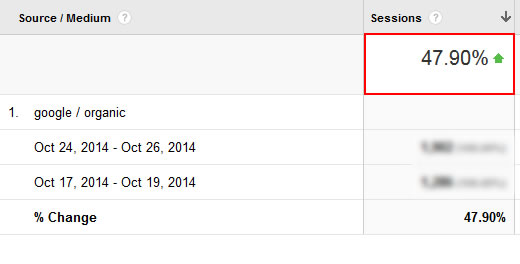
That’s awesome, and was amazing to see (especially for the business owner). They have worked very hard over the past year to clean up the site on several fronts, including content, links, mobile, etc. It’s great to see that hard work pay off via multiple algorithm updates (they recovered from Panda in May during Panda 4.0 and now during Penguin 3.0.) It’s been a good year for them for sure. :)
Moving forward, I fully expect to see more tremors as the global rollout continues. That can mean sites seeing fresh impact, while others see more movement beyond the first date that Penguin 3.0 impacted their sites. For example, a site may recover or get hit on 10/17, but see movement up or down during subsequent tremors. We’ve already seen this happen and it will continue throughout the rollout.
More Recoveries During Penguin 3.0
For those battling Penguin for a long time (some since Penguin 2.0 on May 22, 2013), this was a much-anticipated update. Some companies I’ve been helping have worked hard over the past 12-18 months to clean up their link profiles. That means nuking unnatural links and using the disavow tool heavily to rid their site of spammy links.
For those of you unfamiliar with link cleanup, the process is tedious, painful, and time consuming. And of course, you can have the nasty replicating links problem, which I have seen many times with spammy directories. That’s when unnatural links replicate across other low quality directories. Websites I’ve been helping with this situation must continually analyze and clean their link profiles. You simply can’t get rid of the problem quickly or easily. It’s a nasty reminder to never go down the spammy linkbuilding path again.
For example, here’s a site that had hundreds of spammy links pop up in the fall of 2014. They had no idea this was going on…
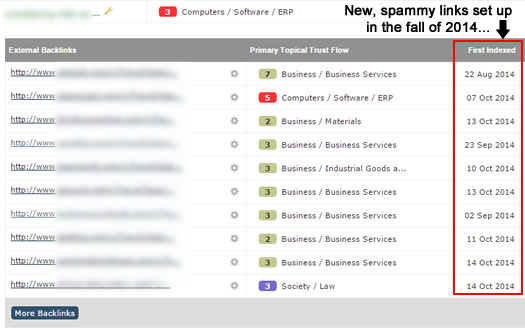
When sites that have been working hard to rectify their link problems experience a Penguin recovery, it’s an amazing feeling. Some of the sites I’ve been helping have seen a nice bounce-back via Penguin 3.0. I’ll quickly cover two of those recoveries below.
The first is an ecommerce retailer that unfortunately took a dangerous path a few years ago. They hired several SEO companies over a number of years and each ended up building thousands of spammy links. It’s a similar story that’s been seen many times since Penguin first arrived. You know, an SMB trying to compete in a tough space, ends up following the wrong strategy, does well in the short-term, and then gets pummeled by Penguin.
The site was not in good shape when they first contacted me. So we tackled the unnatural link profile head on. I heavily analyzed their link profile, flagged many spammy links, they had a small team working on link removals, and whatever couldn’t be removed was disavowed. We updated the disavow file several times over a four to five month period.
But, and this is a point too many Penguin victims will be familiar with, we were done with link cleanup work in the spring of 2014! Yes, we had done everything we could, but simply needed a Penguin refresh or update. Surely that would happen soon, right?… No way. We had to wait until October 17, 2014 for that to happen. The good news is that this site saw positive impact immediately. You can see the increase in impressions and clicks below starting on 10/17. And Google organic traffic is up 52% since Penguin rolled out.
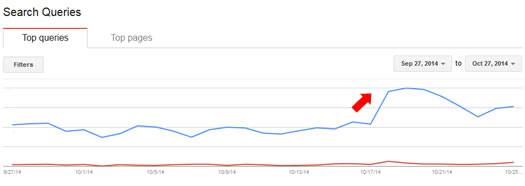
The next recovery I’ll quickly explain started on 10/17 and saw subsequent increases during the various Penguin tremors I mentioned earlier. They saw distinct movement on 10/17, 10/22, and then 10/25. The site saw a pretty big hit from Penguin 2.0 and then another significant hit from Penguin 2.1 (where Google turned up the dial). The website’s link profile was riddled with exact match anchor text from low quality sites.
The site owner actually removed or nofollowed a good percentage of unnatural links. You can see the impact below. Notice the uptick in trending during the various tremors I mentioned.
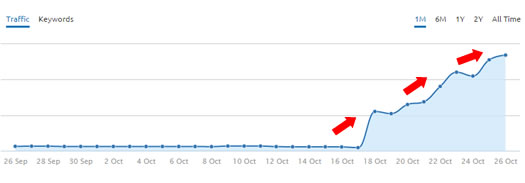
A Reality Check – Some Websites Left Hanging But Rollout Is Not Complete
I must admit, though, I know of several companies that are still waiting for Penguin recovery that should recover during Penguin (to some level). They worked hard just like the companies I listed above. They cleaned up their link profiles, heavily used the disavow tool, worked tirelessly to fix their Penguin problem, but have not seen any impact yet from Penguin 3.0. And many other companies have been complaining about the same thing. But again, Google said the full rollout could take weeks to complete… so it’s entirely possible that they will recover, but at some point over the next few weeks.
A Note About Disavow Errors
It’s worth noting that one client of mine battling Penguin made a huge mistake leading up to Penguin 3.0. They decided to update their disavow file in late September (without my help), and the file contained serious errors. They didn’t catch that upon submission. I ended up noticing something strange in the email from Google Webmaster Tools regarding the number of domains being disavowed. The total number of domains being recorded by GWT was a few hundred less than what was listed in the disavow file prior to the latest submission. And those extra few hundred domains encompass thousands of spammy links. I contacted my client immediately and they rectified the disavow file errors quickly and re-uploaded it.
The website has not recovered yet (although it absolutely should to some level). I have no idea if that disavow glitch threw off Penguin, or if this site is simply waiting for a Penguin tremor to recover. But it’s worth noting.
Fresh Penguin Hits
Now let’s move to the negative side of Penguin 3.0. There have been many fresh hits since 10/17 and I’ve been heavily analyzing those drops. It didn’t take long to see that the same old link tactics were being targeted (similar to previous versions of Penguin). And my research supports that Penguin 3.0 was a refresh and not a new algorithm.
For example, exact match anchor text links from spammy directories, article marketing, comment spam, forum spam, etc. Every fresh hit I analyzed yielded a horrible link profile using these tactics. These were clear Penguin hits… I could tell just by looking at the anchor text distribution that they were in serious Penguin danger.
For example, here’s the anchor text distribution for a site hit by Penguin 3.0. Notice all of the exact match anchor text?
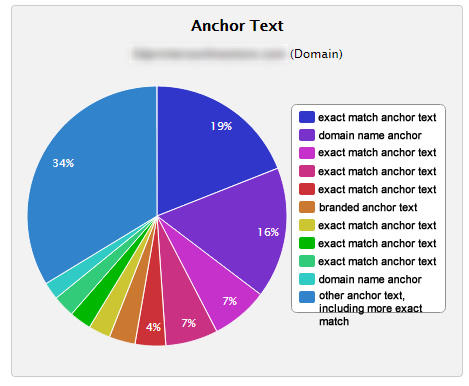
For those of you new to SEO, this is not what a natural link profile looks like. Typically, there is little exact match anchor text, brand terms show up heavily, urls are used to link to pages, generic phrases, etc. If your top twenty anchor text terms are filled with exact match or rich anchor text, then you are sending “fresh fish” signals to Google. And Google will respond by sending a crew of Penguins your way. The end result will not be pretty.
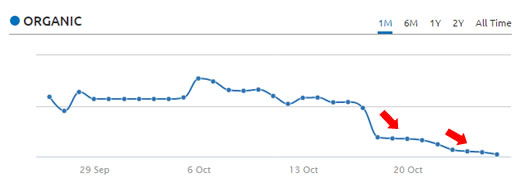
Crazy Gets Crazier
I must admit that some fresh hits stood out, and not in a good way. For example, I found one site that started its spammy linkbuilding just two days after Penguin 2.1 rolled out in October of 2013! Holy cow… the business owner didn’t waste any time, right? Either they didn’t know about Penguin or they were willing to take a huge risk. Regardless, that site got destroyed by Penguin 3.0.
I could keep showing you fresh hit information, but unfortunately, you would get bored. They all look similar… spammy links from low quality sites using exact match anchor text. Many of the hits I analyzed were Grade-A Penguin food. It’s like the sites lobbed a softball at Penguin, and Google knocked it out of the park.
Next Update & Frequency?
At SMX East, Gary Illyes explained that the new Penguin algorithm was structured in a way where Google could update Penguin more frequently (similar to Panda). All signs point to a refresh with Penguin 3.0, so I’m not sure we’ll see Penguin updating regularly (beyond the rollout). That’s unfortunate, since we waited over one year to see this refresh…
Also, John Mueller was asked during a webmaster hangout if Penguin would update more frequently. He responded that the “holiday season is approaching and they wouldn’t want to make such as fuss”. If that’s the case, then we are looking at January as the earliest date for the next Penguin refresh or update. So, we have a minimum of three to four months before we see a Penguin refresh or update. And it could very well take longer, given Google’s track record with the Penguin algorithm. It wouldn’t shock me to see the next update in the Spring of 2015.
Check John’s comments at 46:45:

Important – The Crossing of Algorithm Updates (Penguin, Panda, and Pirate)
In the past, I have explained the confusion that can occur when Google rolls out multiple algorithm updates around the same time. The algorithm sandwich from April of 2012 is a great example, Google rolled out Panda, Penguin, and then another Panda refresh all within 10 days. It caused massive confusion and some sites were even hit by both algos. I called that “Pandeguin” and wrote about it here.
Well, we are seeing that again right now. Penguin 3.0 rolled out on 10/17, the latest version of Pirate rolled out late last week, and I’m confident we saw a Panda tremor starting late in the day on Friday 10/24. I had several clients dealing with Panda problems see impact late on 10/24 (starting around 5PM ET).
A bad Panda hit starting late on 10/24:

A big Panda recovery starting at the same time:
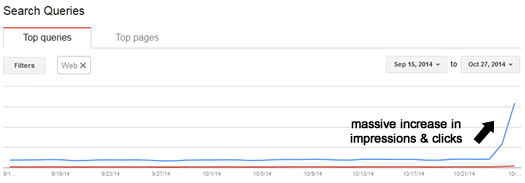
I can see the Panda impact based on the large amount of Panda data I have access to (across sites, categories, and countries). But the average business owner does not have access to that data. And Google will typically not confirm Panda tremors. So, if webmasters saw impact on Friday (and I’m sure many have), then serious confusion will ensue. Were they hit by Penguin, Panda, or for some sites dealing with previous DMCA issues, was it actually Pirate?
Update: I now have even more data backing a Panda tremor late on 10/24. I had Paul Macnamara and Michael Vittori explain they are seeing the same thing. They also provided screenshots of trending for both sites. You can see with Michael’s that the site got hit during the 9/5 Panda update, but recovered on Friday. Paul’s screenshot shows a clear uptick on 10/25 on a site impacted by Panda (no Penguin or Pirate impact at all).
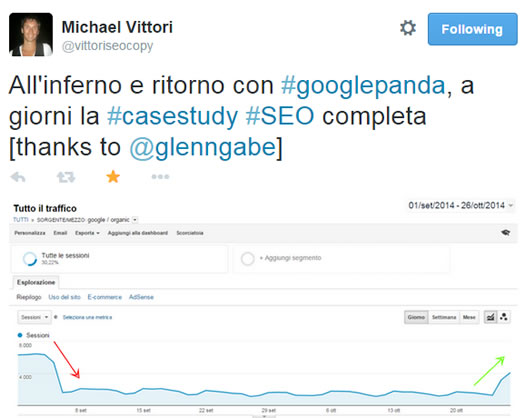
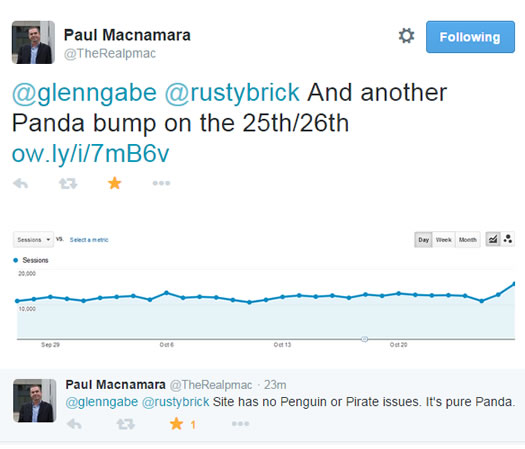
And this underscores a serious problem for the average webmaster. If you work on fixing your site based on the wrong algorithm, they you will undoubtedly spin your SEO wheels. I’ve seen this many times over the years, and spinning wheels do nothing but waste money, time, and resources.
If you saw impact this past week, you need to make sure you know which algorithm update impacted your site. It’s not easy, when three external algos are roaming the web all at one time. But it’s important to analyze your situation, your search history, and determine what you need to do in order to recover.
A Note About Negative SEO
I couldn’t write a post about Penguin 3.0 without mentioning negative SEO. The fear with this latest update was that negative SEO would rear its ugly head. Many thought that the heavy uptick in companies building spammy links to their competitors would cause serious collateral damage.
Theoretically, that can definitely happen (and there are a number of claims of negative SEO since 10/17). Let’s face it, Penguin’s signature is not complicated to break down. So if someone built spammy links to their competitors on sites targeted by Penguin, then those sites could possibly get hit by subsequent Penguin refreshes. Many in the industry (including myself) believe this is one of the reasons it has taken so long for Google to roll out Penguin 3.0. I’m sure internal testing revealed serious collateral damage.
But here’s the problem with negative SEO… it’s very hard to prove that NSEO is the culprit (for most sites). I’ve received many calls since Penguin first rolled out in 2012 with business owners claiming they never set up spammy links that got them hit. But when you dig into the situation, you can often trace the spammy link trail back to someone tied to the company.
That might be a marketing person, agency, SEO company, PR agency, intern, etc. You can check out my Search Engine Watch column titled Racing Penguin to read a case study of a company that thought negative SEO was at work, when in fact, it was their own PR agency setting up the links. So, although we’ve heard complaints of negative SEO with Penguin 3.0, it’s hard to say if those are accurate claims.
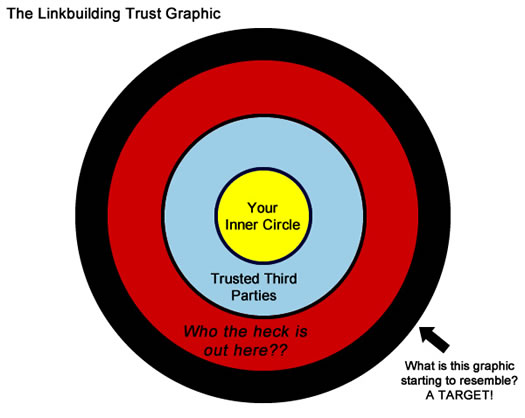
Penguin 3.0 Impact – What Should You Do Next?
- If you have been negatively impacted by Penguin 3.0, my advice remains consistent with previous Penguin hits. You need to download all of your inbound links from a number of sources, analyze those links, flag unnatural links, and then remove/disavow them. Then you need to wait for a Penguin refresh or update. That can be months from now, but I would start soon. You never know when the next Penguin update will be…
- On the flip side, if you have just recovered from a Penguin hit, then you should create a process for checking your links on a monthly basis. Make sure new spammy links are not being built. I have seen spammy links replicate in the past… so it’s important to fully understand your latest links. I wrote a blog post covering how to do this on Search Engine Watch (linked to above). I recommend reading that post and implementing the monthly process.
- And if you are unsure of which algorithm update impacted your site, then speak with as many people familiar with algo updates as possible. You need to make sure you are targeting the right one with your remediation plan. But as I mentioned earlier, there are three external algos in the wild now (with Penguin, Panda, and Pirate). This inherently brings a level of confusion for webmasters seeing impact.
Summary – Penguin 3.0 and Beyond
That’s what I have for now. Again, I plan to write more posts soon about the impact of Penguin 3.0, the slow and steady rollout, interesting cases that surface, and more. In the meantime, I highly recommend analyzing your reporting heavily over the next few weeks. And that’s especially the case since multiple algos are running at the same time. It’s a crazy situation, and underscores the complexity of today’s SEO environment. So strap on your SEO helmets, grab a bottle of Tylenol, and fire up Google Webmaster Tools. It’s going to be an interesting ride.
GG


“I know of several companies that are still waiting for Penguin recovery
that should recover during Penguin (to some level). They worked hard
just like the companies I listed above. They cleaned up their link
profiles, heavily used the disavow tool, worked tirelessly to fix their
Penguin problem, but have not seen any impact yet from Penguin 3.0.”
I’m in this situation, and am very concerned. We did a thorough cleanup of links, and in February succeeded in getting a manual penalty lifted. We had every reason to expect that once Penguin refreshed, we would see some level of recovery (our traffic has been a steady “flat-line” ever since Penguin 2.0 hit us).
When I heard that Penguin 3.0 was rolling out, I was extremely excited. But here we are, over a week later, and we’ve seen no movement of any kind. We still have the same steady flat-line. I know that this rollout could take “several weeks”, so hope isn’t lost yet. But what happens if this rollout ends, and my site (and hundreds of others) don’t recover, when clearly they SHOULD have?
If this does happen, and many sites with cleaned-up link profiles don’t recover to any degree, what do we do then? Wait another year, hoping that the next Penguin refresh doesn’t inexplicably pass us over again?
Or at that point will it be possible to get someone at Google to speak to us, and offer some alternative way to get released from Penguin?
If this scenario goes down, and some of your clients who should have recovered don’t, what will you do?
Thanks!
Thanks for your comment Antonio. And I hear you loud and clear. You’re definitely not alone. The good news is that the rollout is supposed to take a few weeks. I would wait another week or two before getting more concerned.
And if many get left out (that should recover), then we can figure out what to do. Hang in there. And if you want to email me the domain, feel free to do so. I can take a look and monitor it as I see additional Penguin tremors.
It’s an interesting analysis that corroborates with what DejanSEO was saying just before the Penguin 3.0 announcement broke out. It’s interesting to see how your EMD’s were affected, though according to Mozcast this number has bounced back somewhat from 22nd October. PMD’s also took a big hit to the lowest levels and according to Moz’s data are now nearing the highest SERPS entry yet. That’s quite a bullish result wheras the PMD influence has a head and shoulder formation bearing into a overall falling wedge.
Thanks for your comment Ed. Just like with previous Penguin updates, it wasn’t really about EMDs or PMDs. It was more about their link profiles. :) I saw many sites get hit by Penguin 3.0 that weren’t EMDs or PMDs. I mentioned this in my previous posts about Penguin 1.0, 2.0, and 2.1.
Signature-wise, it was the same old tactics being used… .It’s hard to believe that sites employed those tactics, since Penguin has been hammering them since April of 2012. And now we probably won’t see another update until 2015 (and my guess is spring of 2015). Crazy, but definitely possible.
Fair comment Glenn, is Penguin still definitely just about linking and profiles of links solely? The new announcement said ‘newly found spam signals’ & how 1 percent of queries in US English search results have been impacted – I’m just wondering how this can be interpreted. Or is this impact a mere indirect influence on these newly discovered link spam triggers getting put in place? Could it dampen affects of negative SEO in a scalable way perhaps? What are your intepretations of ‘newly found spam signals’?
Ed, definitely go back and read Pierre’s announcement. He explained it’s a refresh and doesn’t say new signals were added…
He says, “This refresh helps sites that have already cleaned up the webspam signals discovered in the previous Penguin iteration, and demotes sites with newly-discovered spam.”
“Newly-discovered spam” is not “new signals”. :)
Yes Glenn, you’re right I misinterpreted what I read on https://plus.google.com/+PierreFar/posts/NURBpsNpef4
Do you think its easier to get Penguin initially, than it is to escape it once its set its teeth in?
Recovery is absolutely possible, but a lot of work needs to be done to get to that stage. A thorough analysis needs to be completed, spammy links identified, and then those links need to be removed or disavowed. For some sites, that means analyzing hundreds of thousands of links. It’s tough, but possible.
Thanks for your comment Elena. It’s hard to tell without analyzing your site in detail. What is the exact date you saw a drop in visits from Google organic? Also, what does Google Webmaster Tools show (for both web and mobile)? You can check your Search Queries reporting to see impressions and clicks.
Thank you very much for your fast response.
it begins to lose visits form 24th :
Google Webmaster Tools
web:
impression : -11%
Clic:-13%
Mobile:
Impression:-12%
clic: -14%
Thanks for sharing the screenshot and information. That would be the Panda update rolled out 10/24. Have you had any previous Panda problems? i.e. Drops during previous Panda updates? Also, did you see any drop during the 9/5 Panda update?
No i’ve never had drops before this one on my site…
You should read my previous posts about Panda (here on my blog and in my Search Engine Watch column). You’ll need to identify any problems Panda-wise and take action.
Elena, can you check Google Analytics and check the time the drop started on 10/24? Also, have you experienced any issues with Penguin in the past. It looks like Panda began rolling out about 5PM ET (based on the sites I have analyzed that were impacted by it on 10/24). But as I explain above, Penguin is also in a multi-week rollout.
This is why it’s best to have an audit conducted (so you can identify the exact drop, understand which pages dropped, understand the factors that contributed to the drop, etc.)
Stefano, you work with Elena, right? :) I was thinking about your situation more, which is why I posted another comment below. There is a multi-week Penguin rollout going on, and they slipped in a relatively big Panda update on 10/24. That’s why it’s extremely important to fully analyze the site, the drop, etc. And no, it’s not the EMD update… it would be Penguin if links are the culprit. Many EMDs are fine… it’s more about the links you are building to the site (whether it’s an EMD or not).
Quickly checking the link profile, there does seem to be a heavy amount of links using exact match anchor text. I came across several on low quality sites (some of which had malware warnings, and immediately starting downloading files to my computer). Not good, to say the least. Very Penguin-like sites if you know what I mean. Have you been linkbulding over the past year? Did you hire a company to help you with that?
I recommended that Elena contact me via email so we can better figure out what’s going on with the site. I hope that helps.
Have you been able to decipher yet what particular factors were part of this latest Panda update they snuck in? We took a noticeable hit with it – first time since August 2013 (and we’d been making small recoveries with every panda since Panda 4 rolled out this past May).
Hi Valerie. I’m sorry to hear you were hit by the latest update on 10/24. I’ve been digging into both recoveries and fresh hits and will let you know what I uncover. One thing that stands out is the connection to the 9/5 Panda update. Were you impacted at all by that update (either positive or negative movement)?
Is there any good way of determining whether your site was hit with Panda or Penguin?
My site’s stats imploded on 10/25, and I have no idea what algorithm did it or why. I’ve never had a problem with an algorithm penalty in 2+ years and was totally shocked, and now I have no way of knowing what’s even wrong. I’ve never bought a link in my life, I nofollow everything, and I’ve never posted an article that isn’t 300-1000 words minimum.
I don’t understand why Google can’t make things at least a tiny bit transparent.
Thanks for your comment Dabid. That drop is exactly what I’m seeing across companies dealing with Panda problems, not Penguin. The 10/24 update absolutely looks like a Panda update slipped into the multi-week Penguin update.
That said, I would need to analyze your site to better understand your specific situation. If you want to email me your domain, you can via my contact page. Also, have you experienced any previous Panda issues? i.e. Any drops during previous Panda updates? Also, how did your site perform through the 9/5 update? I’ve seen a connection between the 9/5 update and 10/24 update. Thanks.
My site got hit by panda probably, on 25 Oct. I don’t know why. Site doesn’t have any backlinks except 4 or 5 that are naturally and all the content from site is written by me. On 5 Sept didn’t happen nothing special, but traffic begin to rise seriously on 3 Oct.
Nick, Panda targets low-quality content, not unnatural links. You should read my previous posts about Panda identification, analysis, and remediation. I hope that helps.
Thanks for this article Glenn. I have been digging around and trying to work out why my shop on Etsy along with many others has plummeted in views from around end of September. How can I work out if this has what has affected us?
Thanks for your comment Sarah. Can you email me your domain? I’ll try and take a look. Panda 4.1 rolled out on 9/23, so it could be that. You can email me via my contact page. Thanks.
You need Google to recrawl the links to understand they have been removed, Google needs to process your updated disavow file, crawl those links, etc.
Then you need another Penguin refresh (or update). There have been a number of Penguin tremors since 3.0 and Google has confirmed it’s still rolling out. I hope that helps.
I’m sorry to hear you were hit Marco. If it was on 10/24, then it sounds like it was the cloaked Panda update. If that’s the case, then you need to analyze your site through a Panda lens (looking for “low quality content”).
That can mean several things, though… Thin, duplicate, scraped, copied, low-quality affiliate content, etc. If you want to email me your domain, I might be able to take a quick look. I hope that helps.
Thanks Jignesh. My schedule has been crazy, so I’ll try and take a look when I can. I’ll be in touch.
Yes, looks like Panda to me on 10/24. You need to audit the site through a Panda lens. I would start by running a Panda report -> http://www.hmtweb.com/marketing-blog/panda-report-top-landing-pages-google-organic/ I hope that helps!
Ah, it’s Majestic (which IMO is the best link analysis tool on the market). You should check it out. I think you’ll dig it. :)
Ah! I use that one for my backlink counter and completely forgot about it. There are so many tools, it’s hard to remember which does what! :)
Thank for for sharing this great content. I really got resourceful information about Penguin 3 and its analysis.
Hi Genn, still no Panda update from 24 oct? it’s very weird
You’re right, I have not seen a Panda update since the 10/24 update. Google seems to have taken it offline during the holidays (which is common). I fully expect one soon, though. Last year they rolled one out on 1/10/14. I think it’s closer than further away at this point.
Nice article Glenn, thanks. One question do you find disavow does anything? Many people say it does not do anything and its better to remove the backlinks yourself, instead of disavowing them.
Yes, in my opinion, the disavow file does work. I always recommend removing as many links as you can manually and then disavowing what you can’t get to. I hope that helps.
Thanks for this post, Glenn. I’ve been trying to dig up information about anything that’s happened around this Oct 24/25 date as that appears to when I’m starting to see some decline. I’m suspecting it has to do with this panda bump. Though it’s not as drastic as some of the other screenshots you’ve posted, it appears to happen inline with those dates. My cohorts have been suggesting the drop may be down due to a lack of links but I suspect it is due to thin content aka panda playing with us. Would love to gain your insight on this. Also, I’m curious as to why this shake up on 10/24 isn’t recorded down on many sites tracking the history of algorithm changes. Thanks!
I’m glad you found my post. And you will definitely want to check out my moz post dedicated to the 10/24 update. It was Panda. 100% http://moz.com/blog/the-danger-of-crossing-algorithms-panda-update-during-penguin-3
Great, I have. Since Google has mentioned that they haven’t been rolling out the Panda updates as “scheduled” or “frequently” as they said they have been, do you anticipate that cleaning up a lot of the thin and duplicate content will help us out when the next “refresh” is? Thanks again.
Google hasn’t released a Panda update in almost 6 months (which is crazy). I can’t say if you will see recovery since I haven’t analyzed your site and I have no idea how big of a content quality problem you had.
Google needs to first crawl of your updates, and then re-measure engagement. That can take a while (often months). I hope that helps.